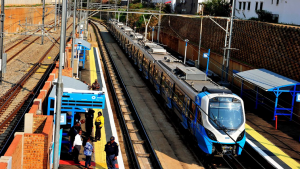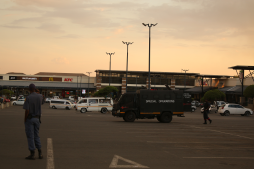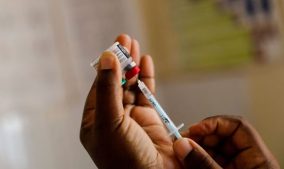The global war against COVID-19 is central to all developments, as a third of the world remains on lockdown in attempts to conquer it. A few industries stand to benefit by regarding this crisis as an opportunity. One of these is the technology space. In this series titled, COVID Tech, SABC News’ Tshepiso Moche reports on coronavirus-related tech developments in South Africa and globally. In this edition, he looks at the COVID-19 dashboard developed by the Gauteng government, IBM, and the University of the Witwatersrand (Wits).
As the country continues to battle the second wave of COVID-19, Wits University in partnership with IBM Research and the Gauteng provincial government have developed the risk index dashboard to help the province identify new hotspots amongst other things.
The risk index dashboard was developed to also help the provincial government roll-out it’s testing strategy.
Researchers at the ICPP, Thuso Mathaha, and Kgomotso Monnakgotla, say the risk index tool was developed to help the province with early detection of the second wave.
“One of the indexes that our team developed is the risk index for the second wave. This index is a tool for the early detection of the second wave and it can be visualised and tracked for the different administrative regions of South Africa. The development of the severity index for hotspots is a continuation of earlier studies.”
The dashboard consists of cases, predictions, risk factors, and hotspots.
This tool was developed by policymakers, practitioners, and researchers from a wide range of disciplines.

Hotspots
According to the Gauteng Provincial Coronavirus Command Council, Gauteng has 360 active hotspots.
Hotspots areas are defined through a thorough analysis of the first wave using AI together with advanced analytics.
The hotspots including Soweto, Tembisa, and Alexandra.
The dashboard contributes to the COVID-19 pandemic response by making data on the spatial location of active hotspots in Gauteng readily available to the public, researchers, and policymakers.
It also helps track hotspots on a ward level using technology developed by Wits’ Institute for Collider Particle Physics.

Meanwhile, on Friday, the Gauteng Provincial Coronavirus Command Council announced that the province has seen a significant reduction in COVID-19 cases over the past two weeks.
On Saturday, the country South Africa recorded 5 297 new coronavirus cases bringing the total number of cases to 1 449 236.
According to the Provincial Command Council, the province’s mortality and hospitalisation rate were also relatively low.
The dashboard provides real-time data that can help the province roll out its testing strategy.
#COVID19 | Risk Indexes in Gauteng #StaySafe pic.twitter.com/p9qIiBMsVH
— GautengGov (@GautengProvince) January 29, 2021
Public health Medicine Consultant at Wits University and Chair of the Gauteng Premier COVID-19 Advisory Committee, Dr Mary Kawonga says the dashboard contributes to the COVID-19 pandemic response by making data on the spatial location of active hotspots in Gauteng readily available to the public, researchers, and policymakers.
“It is able to visualise the specific locations of hotspots. It will influence people’s perceptions of COVID-19 risk and potentially shape personal protective behaviour. The dashboard also provides data useful for the Advisory Committee to guide policymakers on where to target interventions for mitigating the pandemic. Further, the dashboard provides policymakers granular data useful for planning and monitoring the pandemic response at ward level,” says Dr Kawonga
Dr Kawonga adds that even though there are positive results, people should not let their guard down.
She has urged Gauteng residents to continue wearing their face masks, washing their hands, and practicing social distance at all times.
The province has recorded 8 140 COVID-19-related deaths, with 387 673 positive COVID-19 cases since the virus hit our shores.
— GautengGov (@GautengProvince) January 29, 2021






